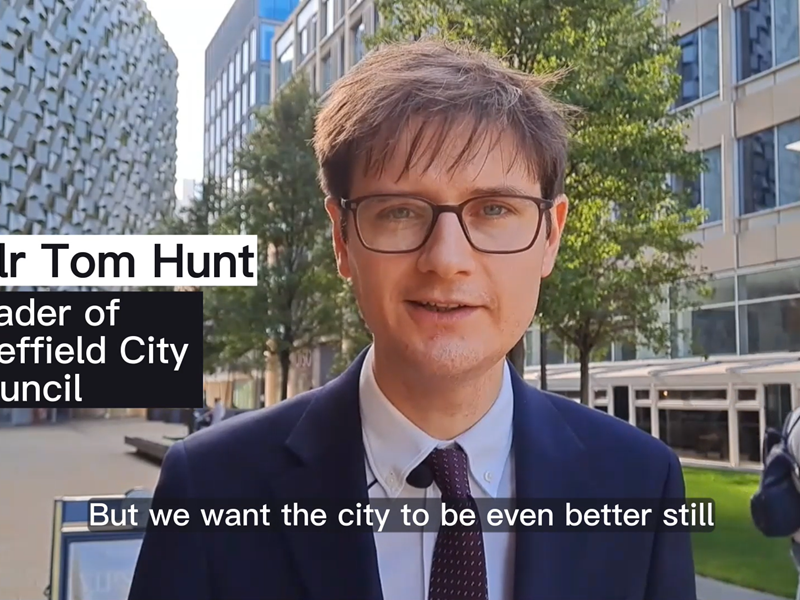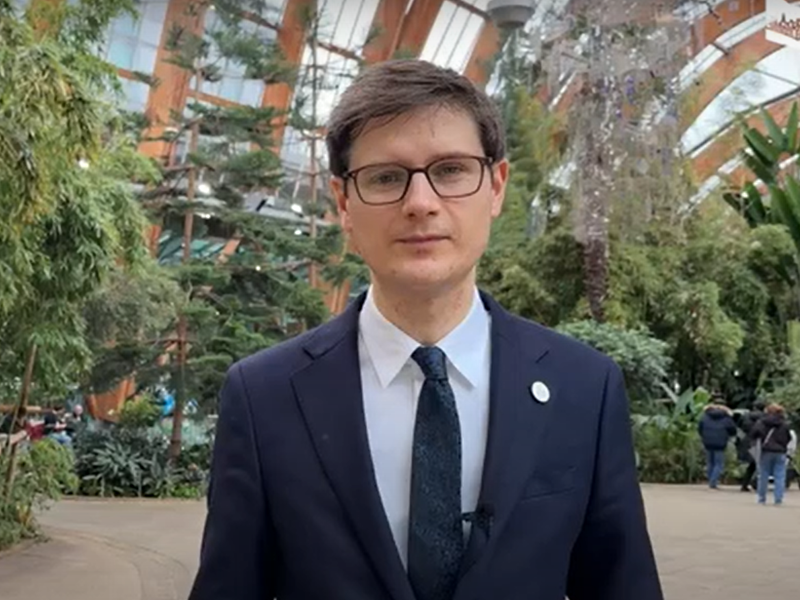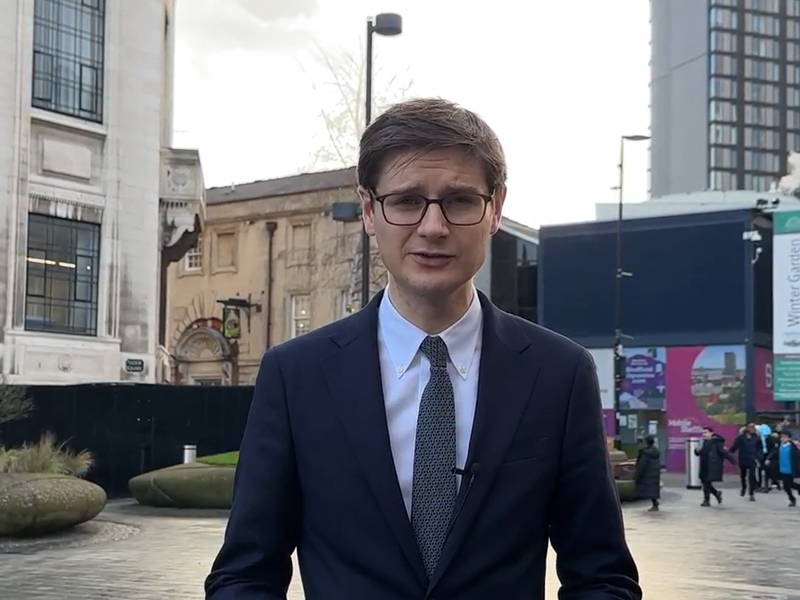Councillor Tom Hunt, Leader of Sheffield City Council, talks about the Local Plan and the important role it will play in Sheffield's future.
Proposal to work with community sector to develop a Community Buildings Policy

Empowering and strengthening local groups, creating thriving places to live and helping communities become more resilient and entrepreneurial are just some of the potential outcomes outlined in the Council’s proposed Community Buildings Policy approach.
The Council owns 4,000 buildings across the city, including iconic and historic buildings such as the Town Hall and Moorfoot building. Within this, it currently manages and maintains more than 100 community buildings and leases out many more to community groups.
It is vital we have a clear and robust Community Buildings Policy to help us deliver on our draft Council Plan and the wider Sheffield City Goals.
The Council will discuss the proposed approach to the Community Buildings Policy on Wednesday March 12th. The report outlines how the Council, if approved, would introduce an interim policy for a year to enable progress on a number of Community Asset Transfers that have already been requested.
Meanwhile, during those 12 months, the Council would work with Voluntary and Community Sector Groups to produce a fuller Community Buildings Policy designed by those who will be using and benefiting from the buildings. This policy would be informed by the findings and learnings of a pilot in the South Local Area Committee (further detail below).
The Community Buildings Policy will provide a guide for the use of community buildings in the city, including how voluntary and community groups can take them over through the Community Asset Transfer (CAT) process and what criteria organisations must meet and/or evidence. Importantly, it will set out how the Council and others will support Voluntary and Community Sector Groups to sustainably manage buildings for the benefit of their communities.
Community Asset Transfer is a voluntary process which involves the transfer of management and/or ownership of public land and/or buildings to a community organisation to achieve an economic, social or environmental benefit.
The new thorough and robust policy would provide the Council with a range of factors to consider for Community Asset Transfer requests, such as a group’s ability to properly maintain a building, their compliance with necessary inspections and their financial capabilities to cover running costs.
At the Strategy and Resources Committee on Wednesday, councillors will discuss the following proposals:
- A 12-month policy for Community Asset Transfer and Community Buildings Strategy – this interim policy will provide a basis to progress with outstanding CAT requests while a fuller policy is developed.
- An area-based pilot in the South Local Area Committee - The Council owns close to 50 community buildings in this area, some maintained by the Council, others managed through leases or other arrangements. There are already a number of CAT requests in place in this area and the Council would progress these buildings during the pilot. The findings and learnings from this pilot would be used to inform the final Community Buildings Policy.
- Future uses for more than 20 Council buildings in need of an immediate decision. There are a range of options for their future use and it is proposed that the Council will work with stakeholders in these buildings and others to assess all possible options and opportunities. Such options include co-location, repurposing or transferring the building to another organisation as well as considering options for selling the building. No decisions have been made on any buildings at this stage.
Cllr Tom Hunt, Leader of Sheffield City Council and Chair of the Strategy and Resources Committee, said:
“People are at the heart of what we do and the future of our community spaces and provision of high-quality services is a top priority for the Council.
“The work of our voluntary and community sector partners to provide services for the people of Sheffield is vital. We wish to strengthen and empower our local community organisations and groups to thrive and further aid the communities they serve.
“That is why, if this proposal is approved, we would be working closely with representatives from these organisations to understand their needs and capabilities – producing an approach for our community buildings which works with and for communities. We will continue to push Government for more funding for our city and for more support for the voluntary and community sector.”
Over the years ahead, if approved, the Council would conduct a thorough and standardised review of all its community buildings. This review would take into consideration a number of factors, including:
- Financial viability of a building’s current condition, the operating costs, maintenance costs, investment needs and potential future use.
- Environmental sustainability – the ability for the building to become net zero and required investment to do so, current and future potential energy performance, carbon emissions and the challenges to achieve it
- Current and future use of the building and availability of similar facilities in the area, including whether the building is fit for purpose for intended use.
- Current and future use of buildings contribution to Council’s strategic ambitions and those of our communities
- Whether there are any legal ownership, covenants or restrictions of building considerations
A decision on the future of each building and its use will be reached based on the findings of the review and on a case-by-case basis. The approach would result in a recommendation for each building to:
- Invest: Target investment to improve the quality of the building and deliver better outcomes for our communities.
- Divest: Dispose of surplus buildings to create savings, which could be re-invested into the Council’s remaining estate. Any building disposals would be undertaken through the Council’s Policy for the Disposal of Council Owned Land and Property.
- Re-purpose: Explore options for co-location, repurposing, or asset transfer of buildings to deliver better value for communities and maximise usage.
ENDS
For information
- The Accommodation Strategic Review, agreed by Finance Sub-Committee in November 2022, set out the roadmap to reduce the size of the Council’s estate, and to provide a more financially sustainable approach to the maintenance of the Council’s buildings. A review of Community Buildings was agreed as part of this overall Strategic Review.
If approved, community groups may be able to apply for a Community Asset Transfer, which can take several forms:
- Management agreement – licence and an agreement to manage asset
- Licence to occupy – right to use for specific uses but not exclusive rights
- Short term lease – less than 7 years with no protected right to renew
- Long term lease – more than 7 years, usually no longer than 30 years, and no protected right to renew other than exceptional circumstances
- Exceptional consideration given to longer term leases (e.g. 99/125 years) depending on content of the Business Plan and requirements of funders/grant giving organisations
- Not every community building will be suitable for Community Asset Transfer and in order to be eligible, applications from community and voluntary sector groups and other not for profit orgs must demonstrate a range of factors. These include existing for community, social and/or environmental benefit of the community, be properly constituted, have good governance, capacity experience and knowledge of property management, embrace equality and diversity to improve community cohesions and reduce inequalities.



